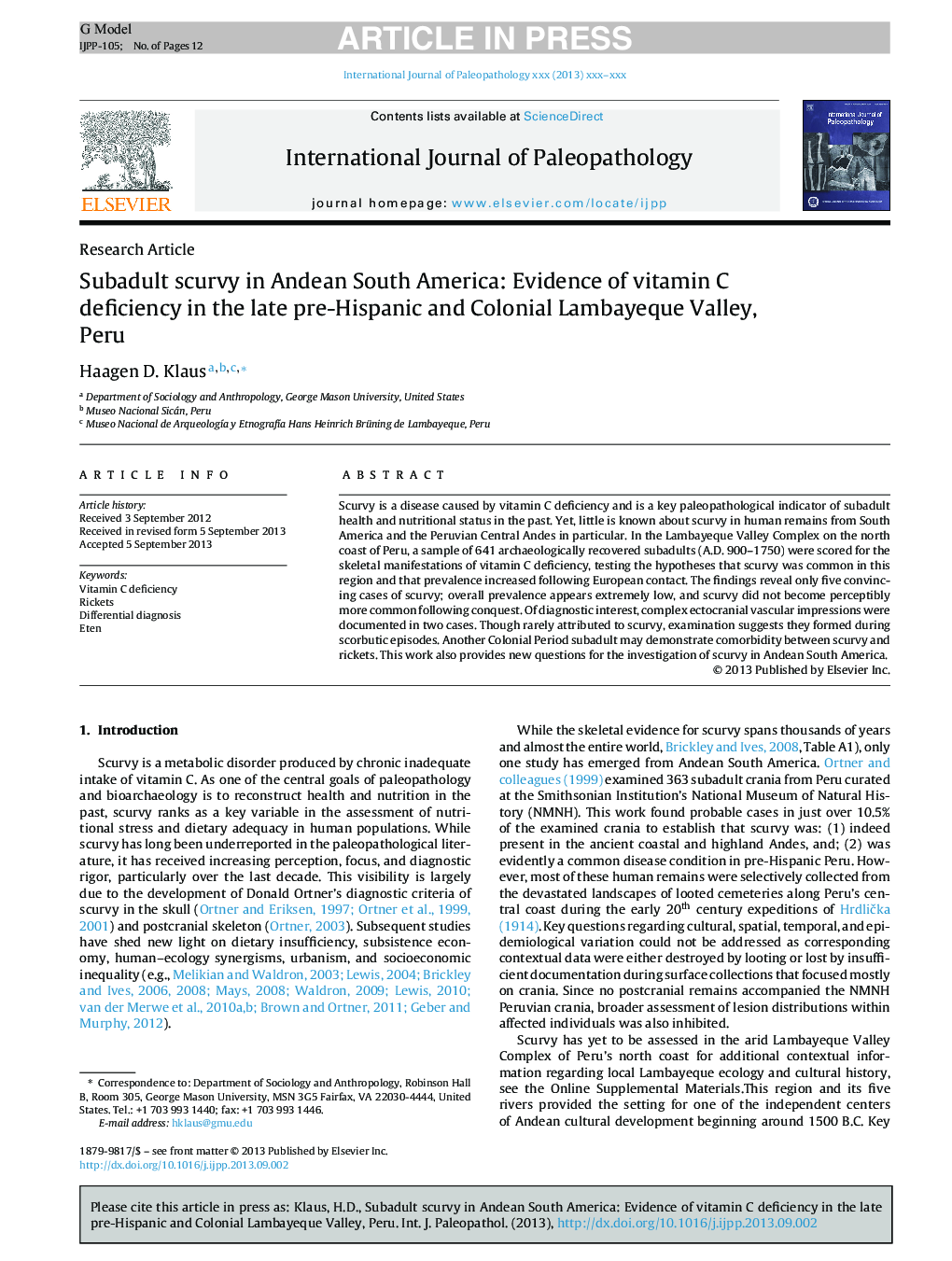| Article ID | Journal | Published Year | Pages | File Type |
|---|---|---|---|---|
| 6554870 | International Journal of Paleopathology | 2014 | 12 Pages |
Abstract
Scurvy is a disease caused by vitamin C deficiency and is a key paleopathological indicator of subadult health and nutritional status in the past. Yet, little is known about scurvy in human remains from South America and the Peruvian Central Andes in particular. In the Lambayeque Valley Complex on the north coast of Peru, a sample of 641 archaeologically recovered subadults (A.D. 900-1750) were scored for the skeletal manifestations of vitamin C deficiency, testing the hypotheses that scurvy was common in this region and that prevalence increased following European contact. The findings reveal only five convincing cases of scurvy; overall prevalence appears extremely low, and scurvy did not become perceptibly more common following conquest. Of diagnostic interest, complex ectocranial vascular impressions were documented in two cases. Though rarely attributed to scurvy, examination suggests they formed during scorbutic episodes. Another Colonial Period subadult may demonstrate comorbidity between scurvy and rickets. This work also provides new questions for the investigation of scurvy in Andean South America.
Related Topics
Life Sciences
Biochemistry, Genetics and Molecular Biology
Physiology
Authors
Haagen D. Klaus,
